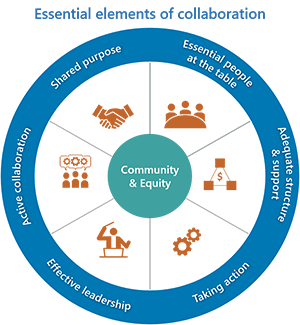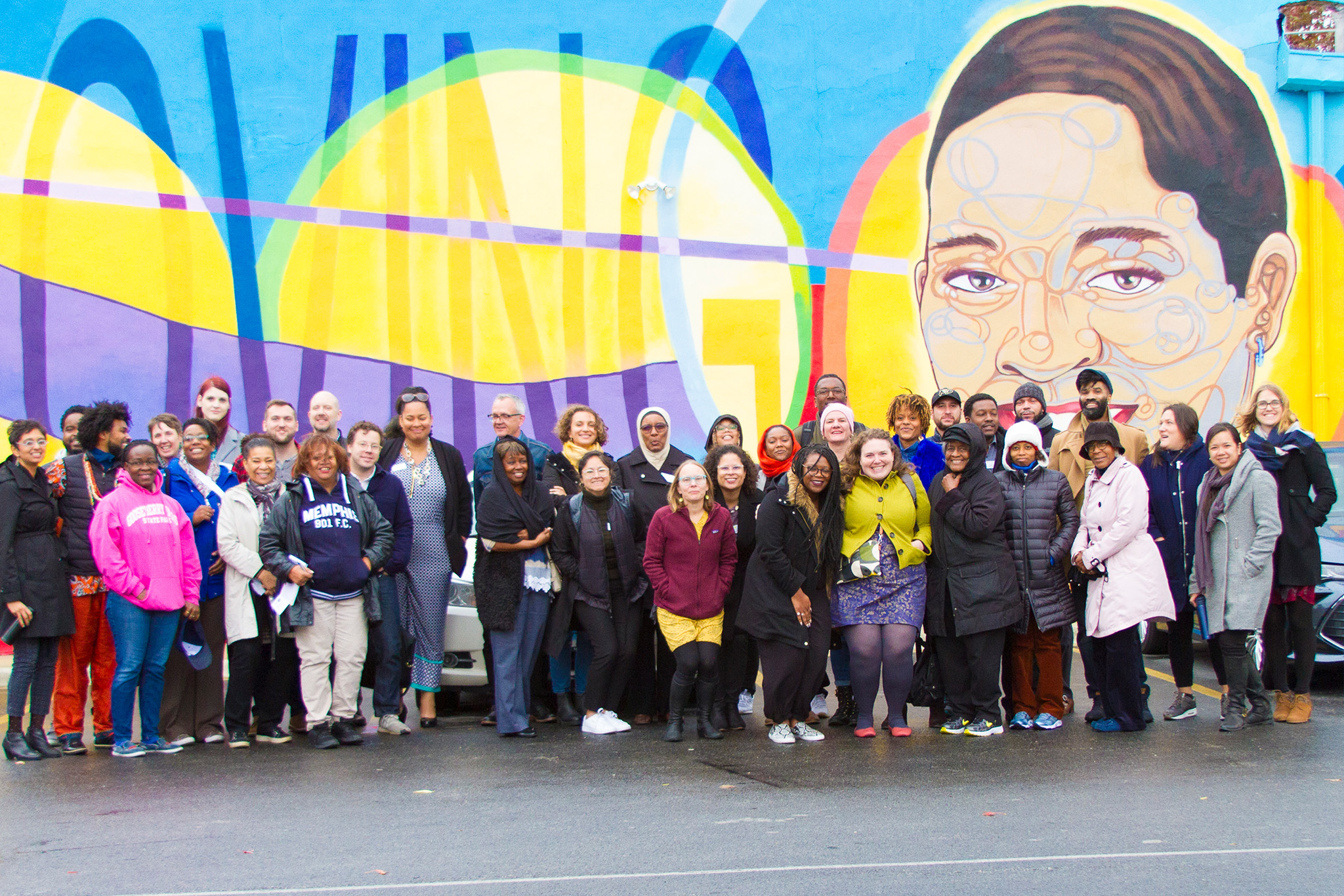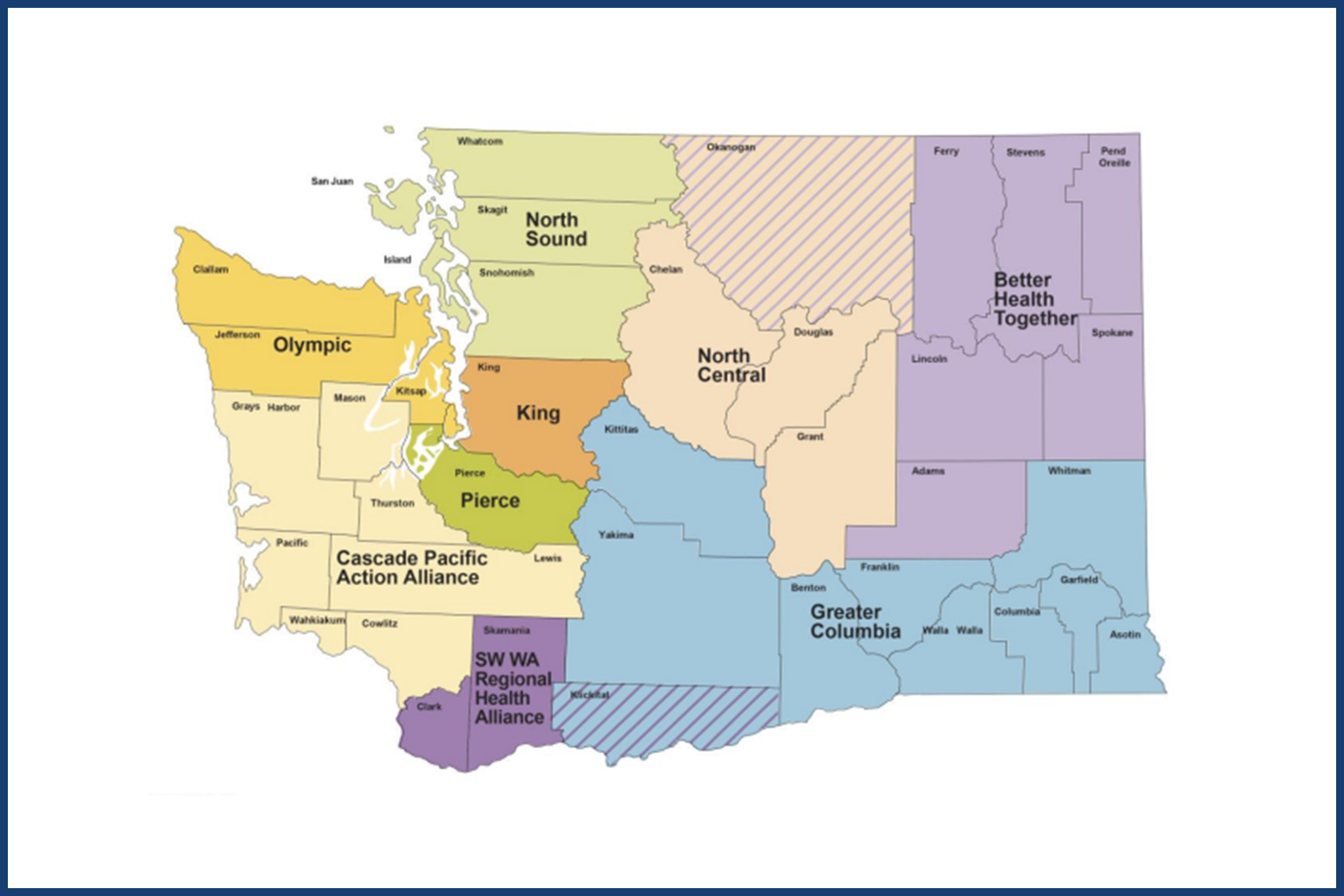Collaboration Model
The essential elements of effective collaboration
Communities know they need to collaborate since no organization acting alone can hope to “move the needle” on complex systemic issues. Groups in both urban and rural communities are collaborating in new ways, with new partners to address systemic problems such as structural racism, environmental justice, income inequality, gentrification and displacement, and chronic disease.
In our work, we see both the recognition that collaboration is essential and also a desire for greater understanding of what it takes to work effectively together across sectors, including what is means to have community and equity at the center and understanding that the best ideas and solutions often reside in the community itself.
In response, CCHE developed a collaborative model that is grounded in our 30 years of experience evaluating multi-sector collaborative multi-site, multi-sector initiatives, informed by existing research, frameworks, and approaches. We know that having a clear, consistent framework can help community members, foundations, and evaluators demystify what effective collaboration looks like, support continuous improvement, and identify the role collaboratives play in achieving system change.
The model includes six essential elements for effective collaboration and defines indicators of success for each element. This helps members
We know that collaboration is dynamic and evolves over time. CCHE’s model can contribute to understanding strengths and opportunities regardless of the stage of a collaborative effort.
The essential elements of the model are:
- Shared purpose: An agreed upon vision and mission, joint priorities, and a sense of collective ownership that centers equity and community context
- Essential people at the table: Intentionally engaging multi-sector and diverse representation beyond those voices typically influencing health-related work. This includes community members who are affected by the group’s work
- Effective leadership: Clear leaders who foster trust and distribute power and decision-making, has credibility, effectively communicates, and steers the collective work forward
- Adequate structure and support: Dedicated staff with adequate capacity to do the work; appropriate committees, rules and processes to meet the goal; structures for clear decision-making and communication that incorporates community voice; data/analytics capacity; and adequate resources
- Active collaboration: All partners actively participate in planning and carrying out work as they operate in the shared interest of the community
- Taking action: A concrete action plan with identified resources and methods for measuring success that support collective progress and achieves outcomes desired by community
To see the model in action, check out one of the following examples of how CCHE has used this model to evaluate and support collaboration across the country:

SPARCC aims to shift decades of racially discriminatory policies and investments that have resulted in racial disparities in health and climate resilience in communities throughout the United States. SPARCC’s work is implemented by collaborative tables in six sites that formalize multi-sector relationships, facilitate collaboration, and provide a vehicle for community leadership and power.

CCHE’s four-year evaluation of Washington’s Accountable Communities of Health (ACHs) which began in 2015 as modestly resourced coalitions focused on improving health in their regions, funded under a State Innovation Models (SIM) federal grant. They have evolved into independent organizations who are leading the collaborative design and implementation of $1.1 billion worth of health system transformation projects. To do so, they needed to build the trust and collaboration required to bring multi-sector partnerships together within their geographic regions.
